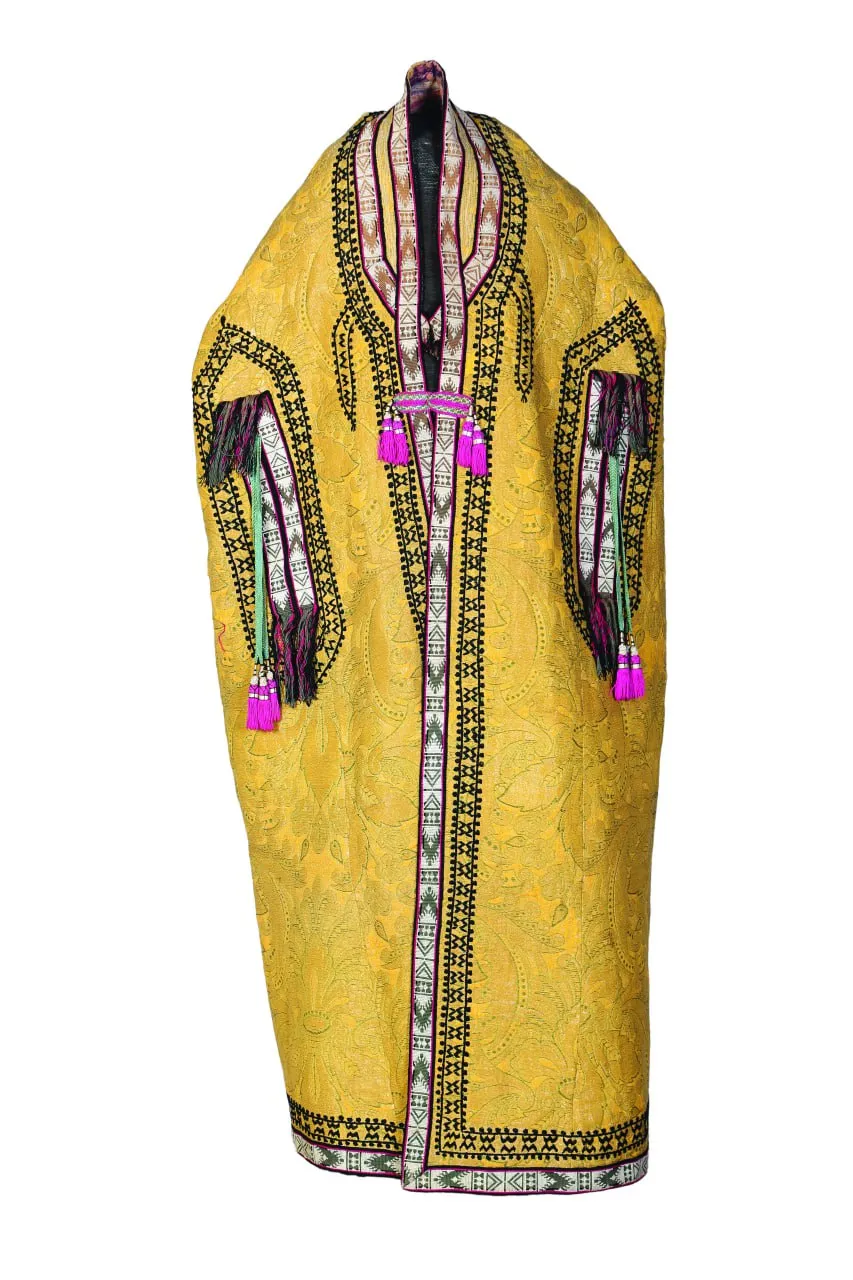Paranja had long and narrow false sleeves connected to each other on the back of the mantle. This type of clothing was mainly used outdoors; one of its components was chachvan – a dense rectangular net of black horsehair that covered the face. Paranja and chachvan are regarded as the basic clothes of Islam, which demanded that the face and figure of a woman be covered. In the late 19th – early 20th centuries, chachvans were produced by local gypsies. The name paranja originated from the Persian farangi, meaning “dress.”
In Central Asia of the 15th and 16th century the term farangi was mostly used to designate scholars’ cloaks. In Central Asian miniatures of that period you can see robes with very long sleeves, which were worn by both men and women. From the 18th century, when people started wearing paranja over the head, long sleeves lost their practical significance and became just an accessory.
In the late 19th – early 20th centuries, paranja was produced by craftswomen called paranjiduz and chevar, who sewed the items to order or for sale at a bazaar. Robes for sale were usually not so high in quality as custom-made ones, and in most cases were machine-embroidered. In the 1850s – 60s, paranja was sewn mainly from cheap, locally produced cotton fabrics. Since the 1870s, semi-silk fabrics, such as banoras, were more preferred. In the late 19th century these items were sewn from local and imported silk and satin with a woven Chinese pattern, imported from Kashgar.
At the age of nine, each girl began wearing paranja. By the time of her wedding, a girl owned two or three paranjas, while girls from a well-to-do family might have four items made from expensive fabrics. Formerly, these coats were ankle-length, but over time they grew shorter. In the 20th century the tradition of wearing a paranja started to die out under the influence of the general changes caused by the Russian dominance.
You can learn more about the topic in the book-album "The Collection of the Czech Republic" (Volume XVI) in the series "Cultural Legacy of Uzbekistan in the World Collections".
The main sponsor of the project is the oilfield services company Eriell-Group.

